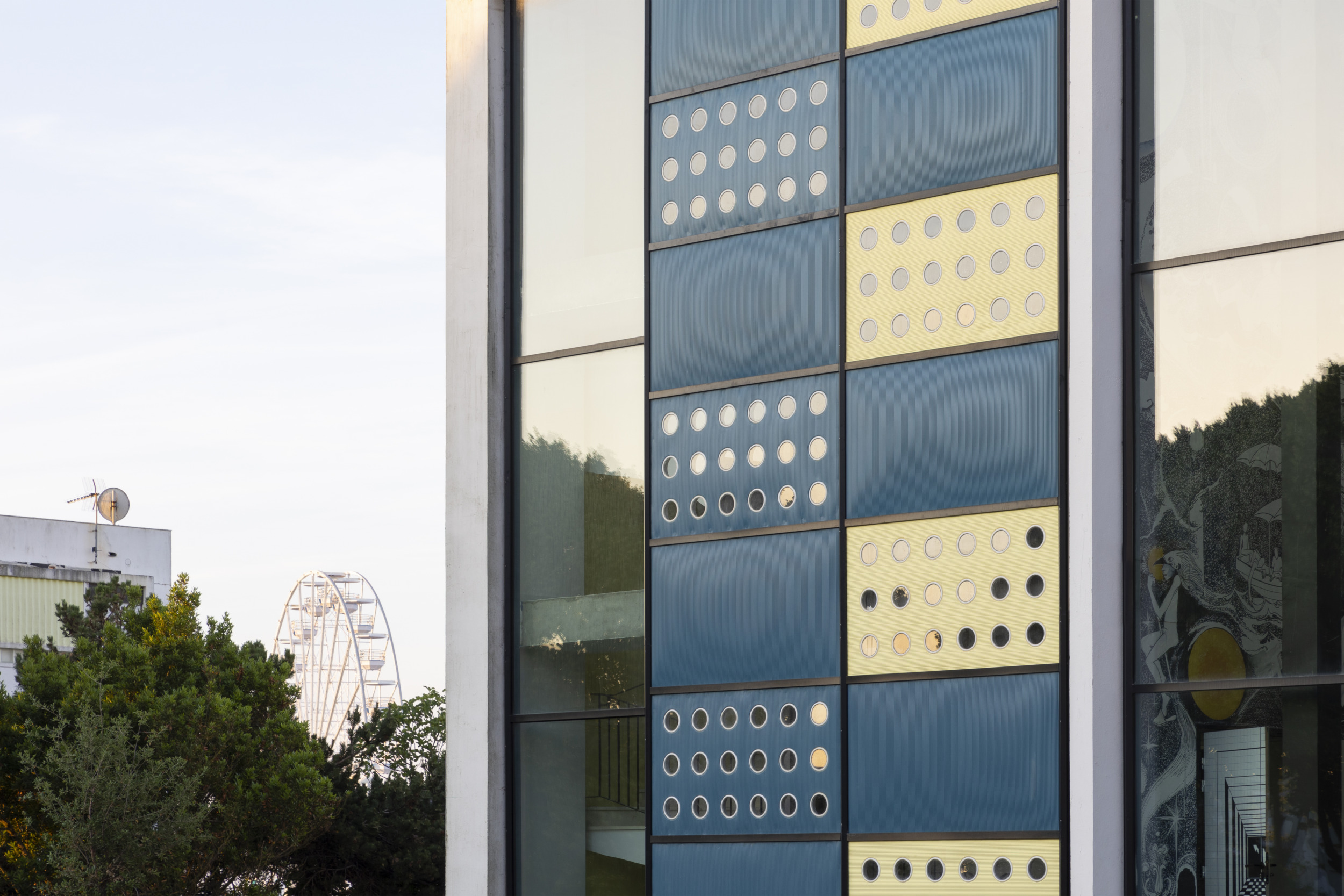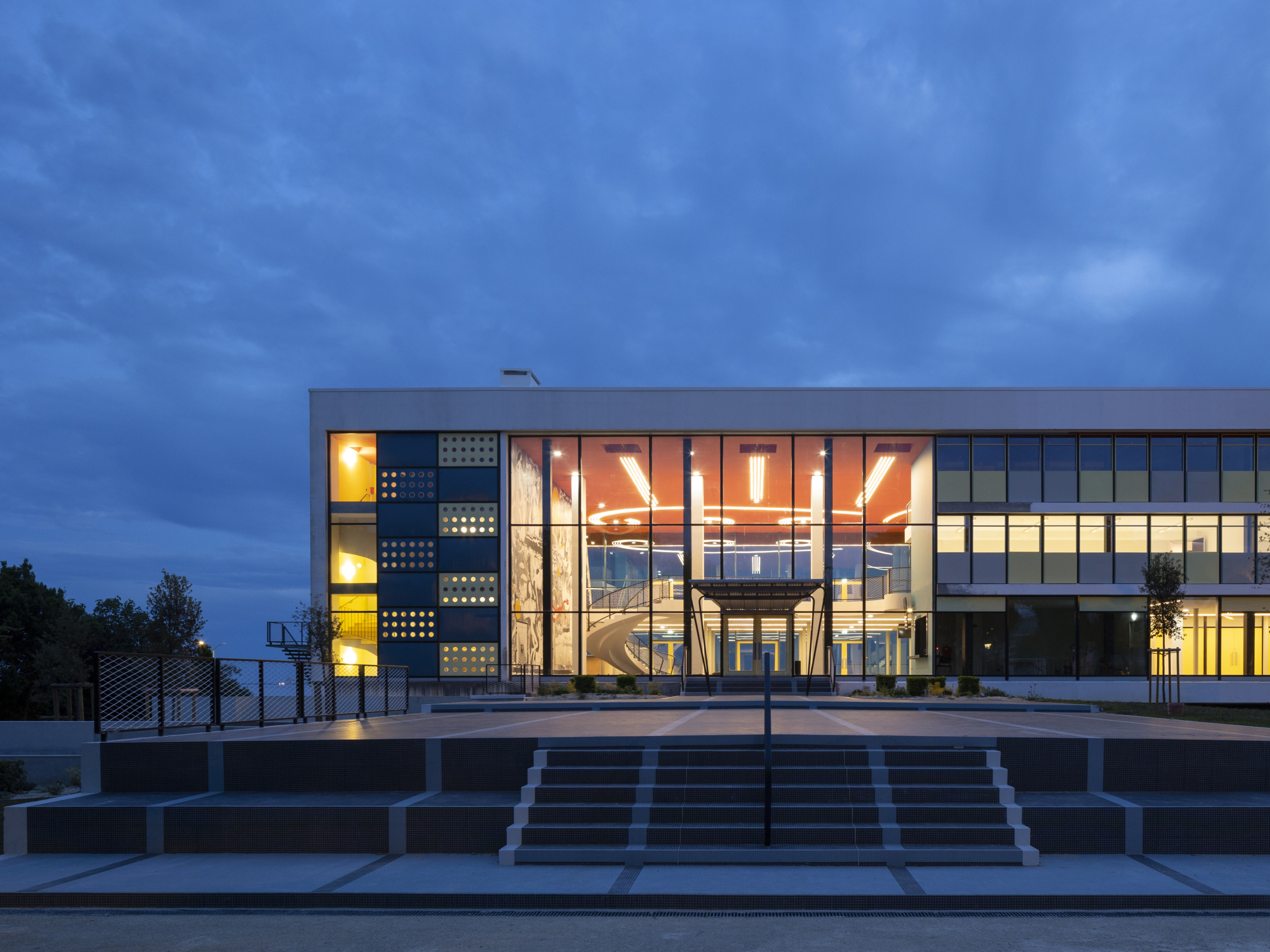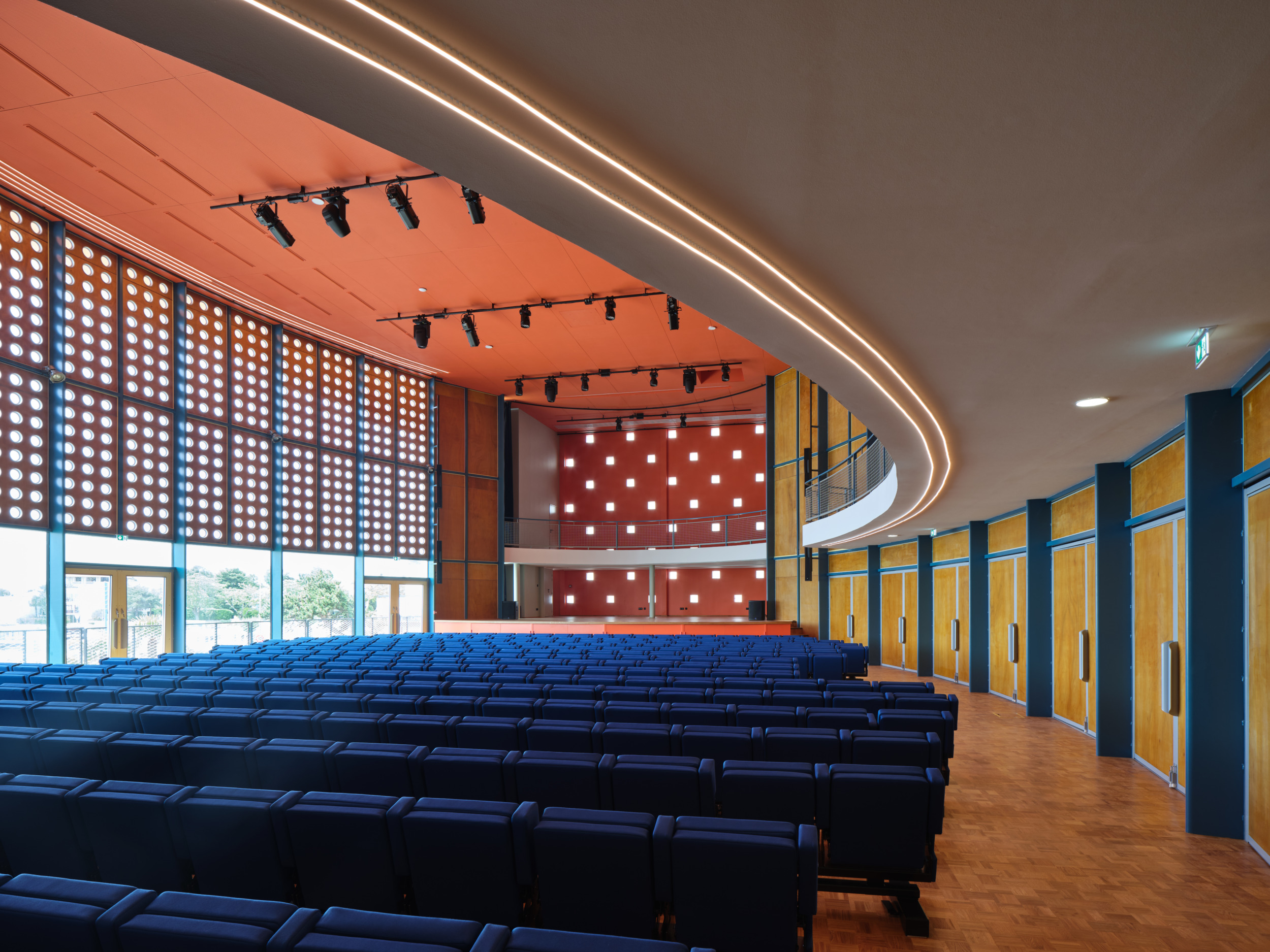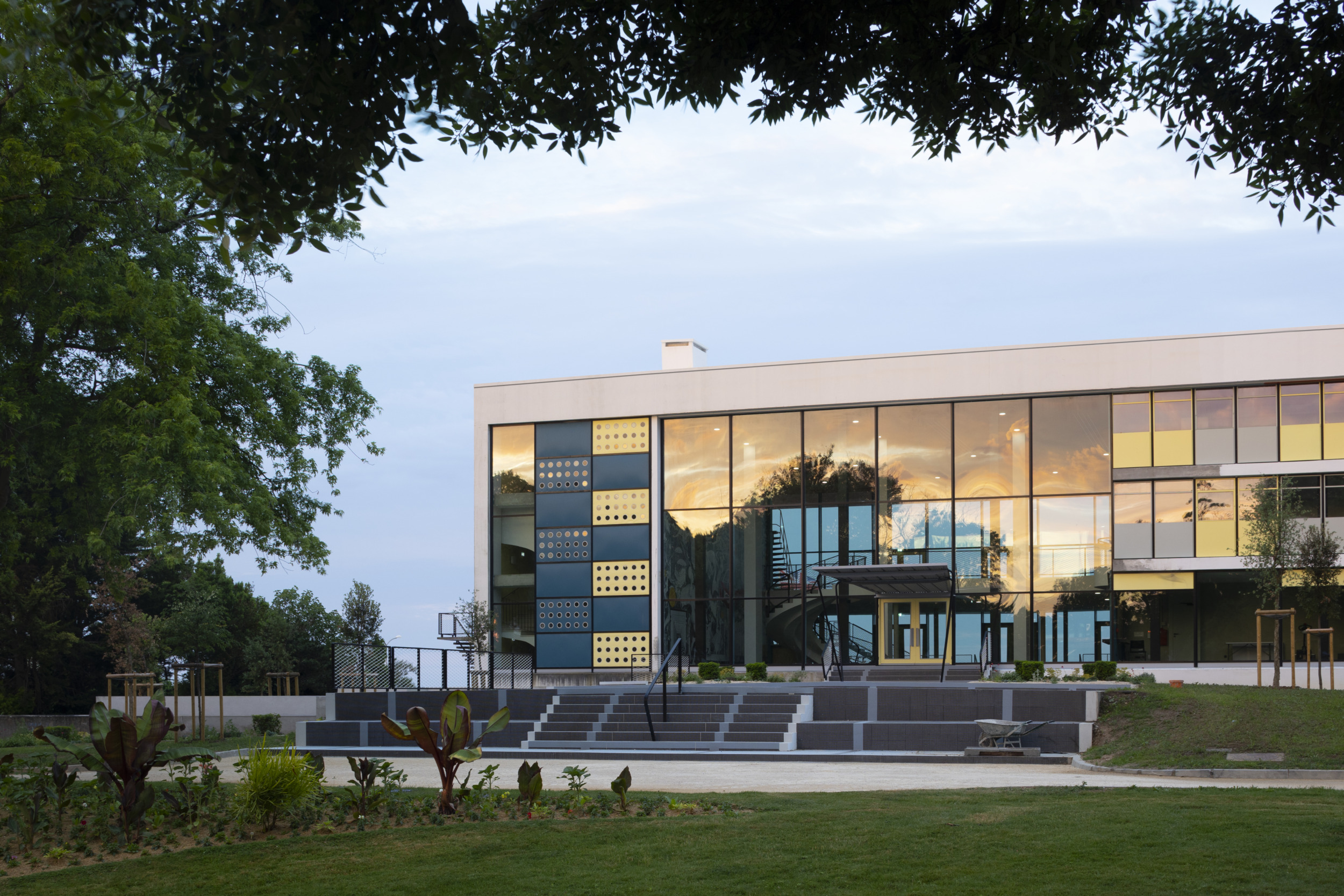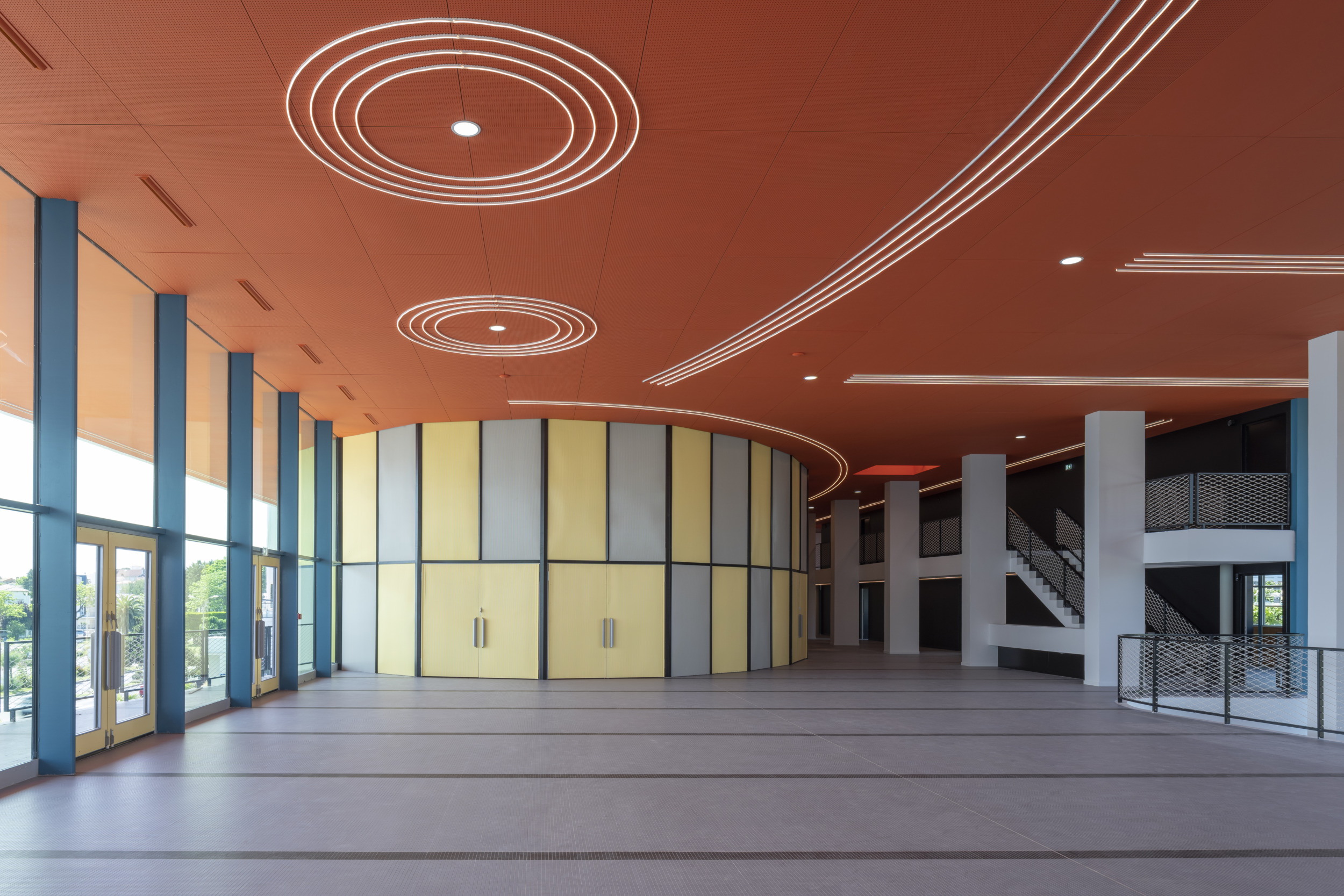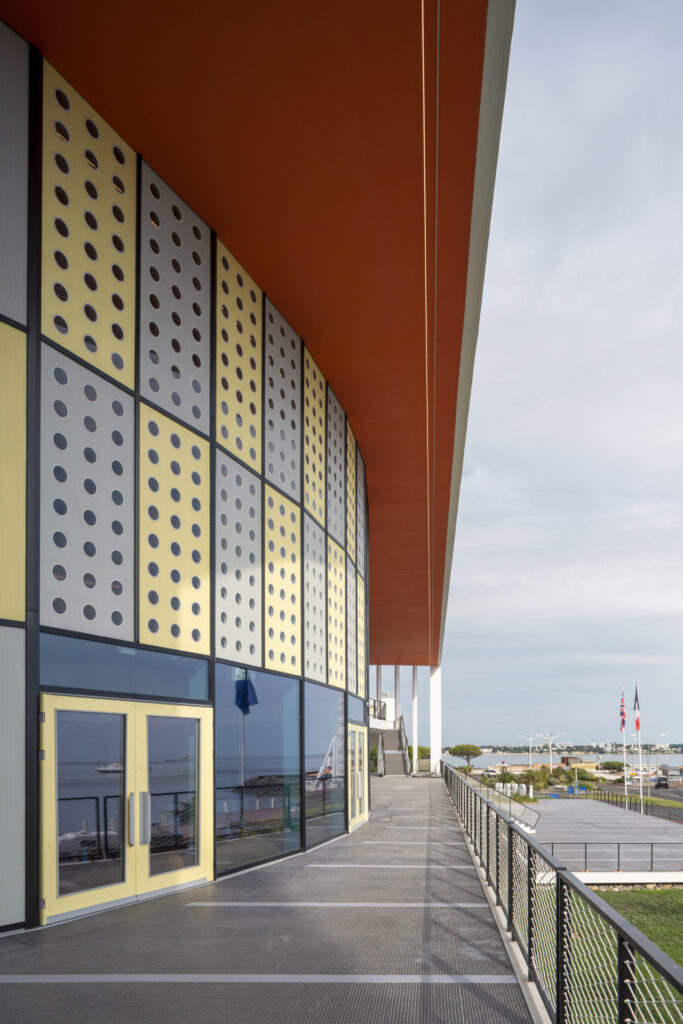A well-known seaside resort, the town of Royan experienced tremendous growth under the Second Empire. Destroyed by bombs during the Second World War, traces of the pre-war city remained scarce. In 1949, the government of the time designated the town as a priority for reconstruction, thus prompting its redesign. The project was entrusted to the Bordeaux architect Claude Ferret, who would turn the town into an example of the architectural and urban culture of the 1950s.
ROYAN CONGRESS CENTER
RESTORATION AND MODERNISATION OF A TESTIMONY TO THE ARCHITECTURAL RENEWAL OF THE 1950s
The first Congress Center in France recovers its programmatic and technical innovation of the 1950s.
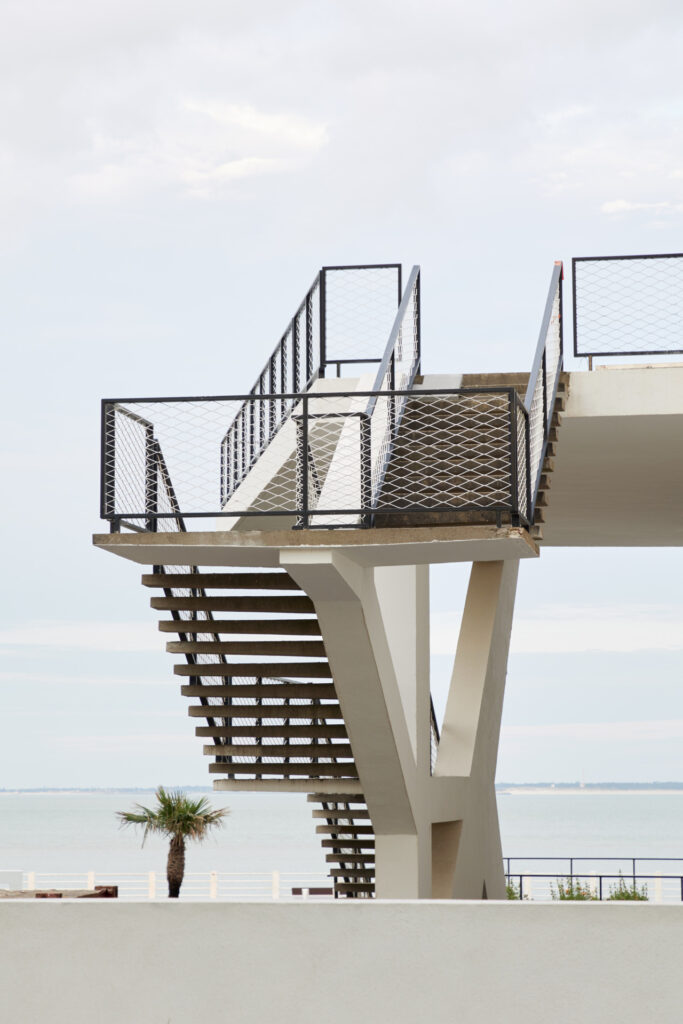
The new town was built according to the principles of the Modern Movement, which promoted aesthetics based on functionalism and rationalism, with an innovative approach according to which the form of buildings should derive exclusively from their purpose. The program included the creation of the first congress center in France. After four years of construction work, the building was inaugurated in 1957, with a façade made out of Jean Prouvé’s porthole panels. In 2004, the congress center was awarded the “Heritage 20th century” label and was listed as a historical monument in 2011.
In 2007, the town of Royan decided to rehabilitate the congress center, which had undergone too many alterations since it was built, in particular due to refurbishments in the 1970s. As part of an overall approach to restoring the city of Royan’s heritage, the aim is to recover the congress center’s programmatic focus and original architectural complexity, while enhancing its comfort and ensuring that it meets today’s standards. An Interpretation Center for Architecture and Heritage (CIAP) will also be opened to inform and raise awareness among the general public about the area’s architecture and heritage.
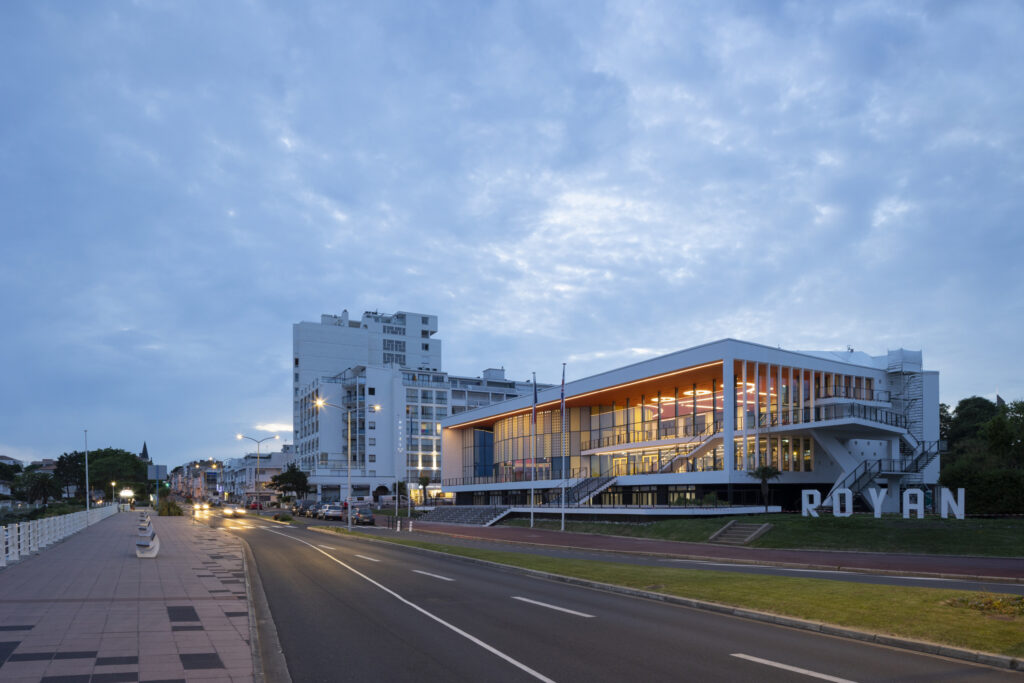
The restoration and modernisation project we are carrying out alongside Pierre Ferret, son of Claude Ferret, will result in the revival of the architectural structure of the 1950s. The congress center will be redesigned to recover its initial layout, and will include a theater and conference hall, a bar, a restaurant, and exhibition spaces. The complete renovation of the Saintonge Hall aims to restore its original elliptical shape and to improve its comfort and security standards. To this end, several structures have been destroyed, such as mezzanines, interpreter booths and some later partitions. On the exterior, the glass façade dating back to 1987 has been removed to restore the “curtain wall” made out of Jean Prouvé panels with Vermeer gray and yellow.
